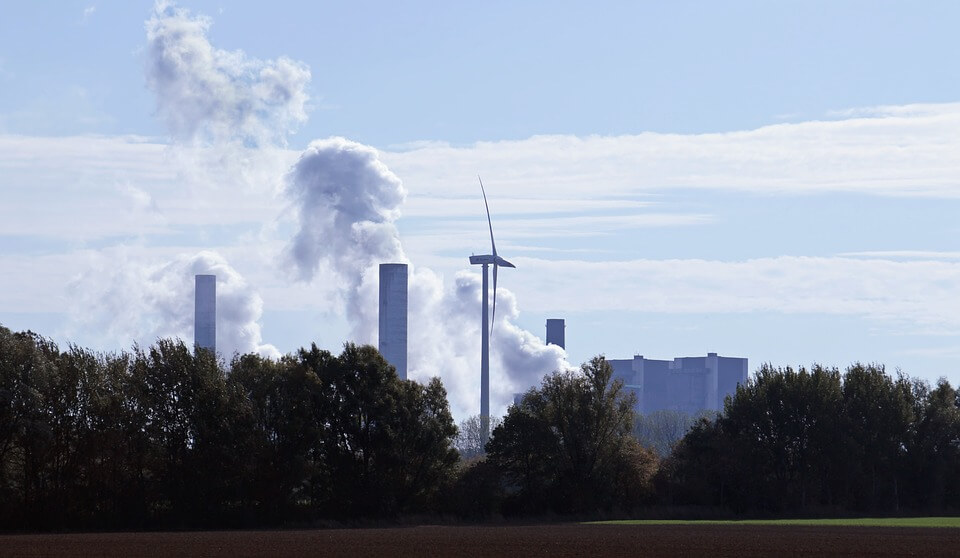The health impacts relating to energy sources have long been a topic of worry and study, and for good reason. Poor air quality is one of the greatest threats faced by humans, globally. A 2018 World Health Organization (WHO) report last year found that air pollution causes seven million premature deaths per year. Another report found 100,000 American lives are taken each year from pollution-related illnesses.

Research to date has shown zero links between cancer and wind turbines. However, the same cannot be said for coal-fired power and cancer.
Coal particulates, in particular, have been linked to the four leading causes of death in the U.S.: cancer, heart disease, respiratory illness, and stroke.
A UN Intergovernmental Panel on Climate Change recently warned that coal-fired electricity must end by 2050 to reduce the chances of “a major climate crisis in just 20 years.” Fossil fuels are one of the main drivers of climate change, which is a major contributor to air pollution.
The good news: last year, coal consumption fell to its lowest level since 1979. According to the U.S. Energy Information Administration (EIA), coal’s market share is expected to decline to 24% by 2020. At the same time renewables, led by wind and solar energy, are expected to be the fastest-growing source of U.S. electricity generation, for at least the next two years finds the EIA. And wind is projected to overtake hydropower in America this year.
One reason wind power is leading the charge is because it is the least costly source for new electricity generation. Wind energy costs have fallen by more than two-thirds since 2009. However, wind has come under criticism of late with concerns raised about its health effects.
Specifically, the U.S. President linked noise-generation from wind turbines to cancer at a speech given during the National Republican Congressional Committee’s spring dinner last week.
So, what does the research say? Shortly after the speech, a spokesperson for the American Cancer Society shared this with the New York Times: “The American Cancer Society is unaware of any credible evidence linking the noise from windmills to cancer.”
A recent report by the Iowa Environmental Council (IEC) found little scientific evidence that sound from wind turbines represents a risk to human health to those living nearby wind sites.
“A basic concept from the science of public health requires that a human health risk be a true hazard and that there is exposure to that hazard,” the report stated. “Wind turbines produce sound pressure, but if the frequency is at or below the threshold of human perception and the sound pressure level is low at area residences, there is little or no exposure to cause human health problems.”
The researchers of that report also pointed to peer-reviewed surveys on the topic of wind turbines and health, including a 2014 report by Robert J. McCunney, a professor at the Massachusetts Institute of Technology (MIT).
Windpower Engineering & Development interviewed McCunney in 2016 and he said that numerous studies have looked at health problems related to living near wind turbines and no health links have been found between noise levels and health risks such as diabetes, hypertension, tinnitus, or cardiovascular diseases.
He also noted that even just hearing that a wind farm might be developed in a region has caused anxiety and sleep problems in some people. “Nocebo, or the opposite of a placebo effect, is the anticipation that you will get worse in a certain setting. Controlled lab evaluations have supported the notion that annoyance and other complaints may reflect, at least in part, one’s preconceived notion or perception about wind turbines and noise,” McCunney said.
Interestingly, a 2017 Australian study found that one’s political view toward wind turbines largely determine how symptoms and alleged health effects are interpreted, also pointing toward a “nocebo” effect.
IEC report author, Kerri Johannsen, also said: “Repeated scientific studies have shown that receiving misinformation about wind-turbine health effects can actually cause people to experience symptoms. It is critical that factual information on this issue is shared to avoid unnecessary suffering.”
While no energy source is neutral, it is important to evaluate each resource on its true merits. Wind is a low-cost energy source that provides electricity without emitting greenhouse gases or air pollutants. And that’s more than one can say about fossil fuels or coal.
To read more about studies on the health effects of wind turbines, the Canadian Wind Energy Association (CanWEA) lists a number of scientific studies here.
Filed Under: News




